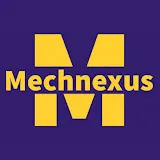0:01
Hello friends welcome to Free tutorial
0:03
and in this tutorial we will do the
0:06
knuckle joint assembly in freead with
0:09
the help of A2 plus workbench as you can
0:12
see that uh I have did the knuckle joint
0:15
assembly with the help of uh this uh
0:18
drawing and you can see that all the
0:21
parts here are in the exploded view I
0:25
have already modeled this part and I
0:28
provide the source file of this assembly
0:31
in the video descriptions so you can
0:34
download it and practice the a2+
0:38
assembly workbench in freecat so I will
0:41
show you from the scratch how I have
0:43
created this assembly with the help of
0:45
a2+ so let's start you can visit the my
0:51
dedicated playlist on specific topics on
1:00
micros workbenches mechanical design I
1:04
have created separate playlist for uh
1:09
different topics so you can visit and uh
1:12
watch the videos of your
1:15
interest you can also visit my website
1:18
Mech nexus.com where I write articles on
1:23
freead tutorials on freeat I also write
1:27
articles on a mechanical design
1:30
and I also cover the journ topics on a
1:36
engineering so you can visit my website
1:39
link is provided in a video
1:43
description if you like my work and want
1:46
to support me then you can support me on
1:51
coffee.com you can buy me a cup of
1:54
coffee your small support will help
1:56
these channels to grow you will find my
2:00
cofi donation page link my website link
2:04
in a video descriptions so come back to
2:10
tutorial so I will uh discard this file
2:15
and I will create a new
2:18
file and first I will save my file so
2:22
here I have saved my file and now I will
2:25
call one by one part in our assembly and
2:29
we will assemble it so here on a2+ you
2:33
will see the first option which is ADD
2:35
part from an external file click on it
2:39
and uh call your first part so our first
2:43
part will be the fork say
2:46
insert and place it and now here you
2:51
will see that uh our part
2:54
orientation is like this in our
2:57
drawing so we will click on our inserted
3:06
transform and here we will rotate it as
3:11
orientations say okay and now we will
3:15
insert our second part which is the I
3:21
end click on insert and insert I
3:30
now we will assemble it so first
3:34
constraint I will give select this phas
3:38
and this phas and here you will see
3:42
option of a plain coincidence
3:45
constraint and accept
3:51
now select the surface inside and inside
3:55
surface of our fork and I and view the
4:00
Excel constraint accept
4:03
it and now select this pH and this
4:08
pH and give the parallel constraint to
4:14
movement and now we will insert our pin
4:19
so click on ADD part on a external
4:34
now select the internal surface and give
4:38
the Excel constraint accept it now
4:45
face and this pH of a pin and give
5:04
caller click on ADD part from external
5:24
pH give the coincidence constraint
5:30
now select the internal phas and this
5:32
face and give the Exel
5:38
now I will click on my colar click on
5:43
transform and move it to the
5:46
down and I will select this pH and this
5:51
face and give the Excel
6:04
now we will insert our taper pin to lock
6:10
it click on the add part from external
6:13
files click on the taper
6:18
pin now select the pin surface and color
6:23
surface you the Excel
6:31
and now click on the taper
6:34
pin and uh click on the
6:39
transform rotate it and
6:50
okay again click on the
6:57
it so this is how the cter pin Position
7:04
be so it has the rotational mement to
7:08
our callar and pin so it doesn't
7:11
matter click on the isometric view so
7:14
you can see that uh how we have
7:17
created the assembly in a free care of a
7:21
knuckle joint with the help of uh a2+
7:26
workbench so this is all about this
7:28
tutorial if you like this tutorial then
7:30
please like subscribe and share I will
7:33
come with more useful tutorial like this
7:36
on uh free Care thank you for watching
7:39
and thank you for your valuable

